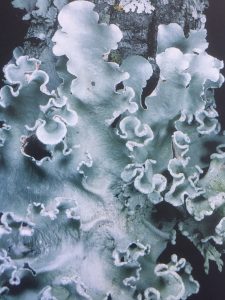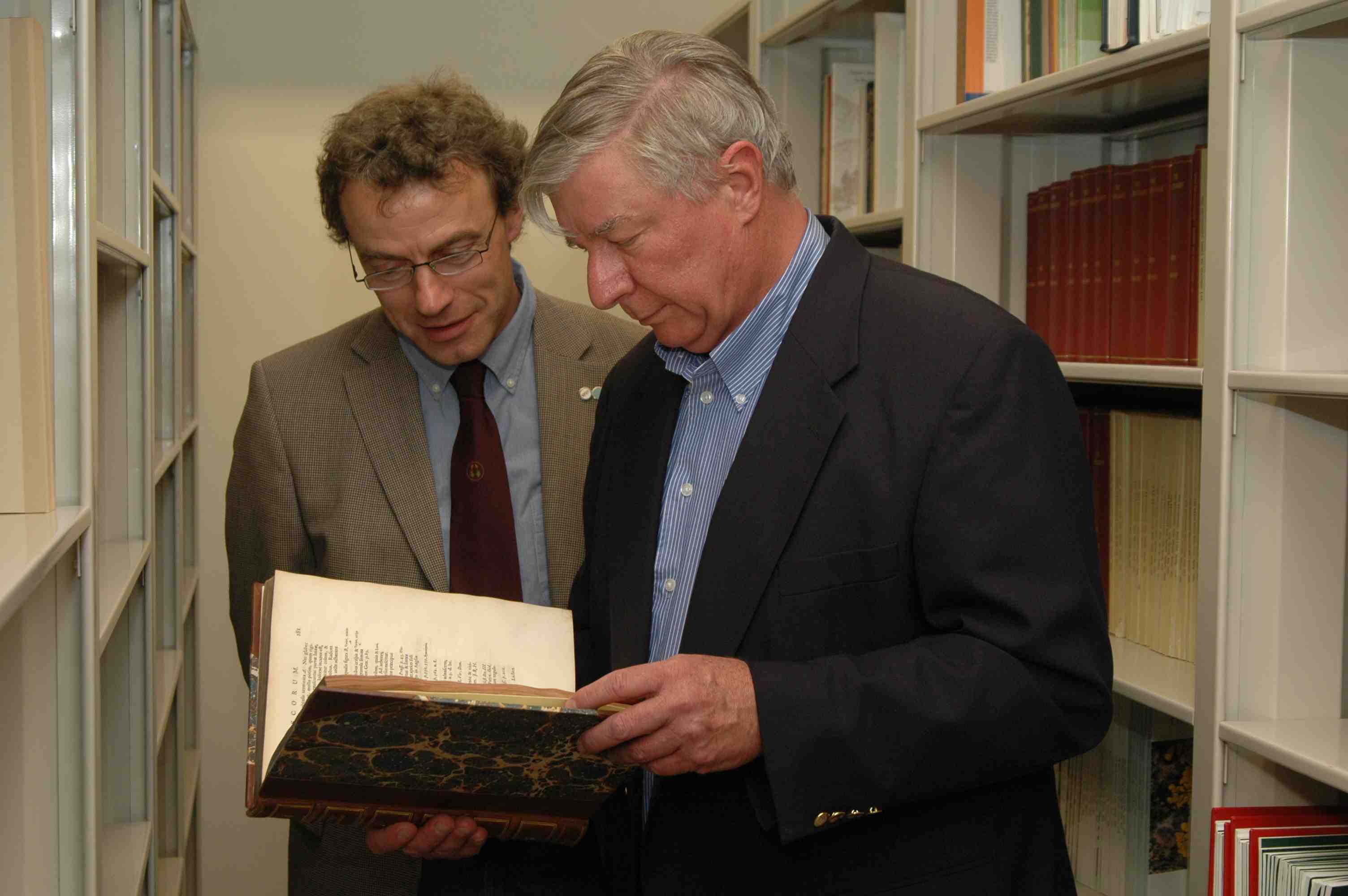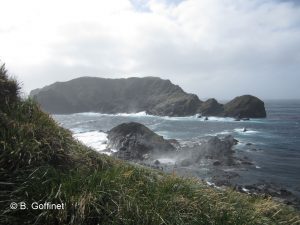 The publication of the study revealing the presence of (re)introduced lichenized fungi in CT, based on populations present on the university campus (Frye H.A., Z. Muscavitch & B. Goffinet. 2021. Discovery of epiphytic lichens in Connecticut suggests novel introduction and reintroduction via horticultural practices. The Bryologist 124: 191–197. pdf, see post) prompted an article “Ecologists are ‘Lichen’ a Surprising New Find on Campus” in UCONN today.
The publication of the study revealing the presence of (re)introduced lichenized fungi in CT, based on populations present on the university campus (Frye H.A., Z. Muscavitch & B. Goffinet. 2021. Discovery of epiphytic lichens in Connecticut suggests novel introduction and reintroduction via horticultural practices. The Bryologist 124: 191–197. pdf, see post) prompted an article “Ecologists are ‘Lichen’ a Surprising New Find on Campus” in UCONN today.
Author: Bernard Goffinet
Antoine Simon awarded BAEF fellowship
 Welcome back! Dr. Antoine Simon, who has visited UCONN and our lab during his MSc and Ph.D. is coming back! Antoine was awarded a fellowship from the Belgian American Education foundation to spend one year here, and further explore the evolution of lichenized fungi!
Welcome back! Dr. Antoine Simon, who has visited UCONN and our lab during his MSc and Ph.D. is coming back! Antoine was awarded a fellowship from the Belgian American Education foundation to spend one year here, and further explore the evolution of lichenized fungi!
Some of the publications emerging from his recent work:
New publication on lichens
 Frye H.A., Z. Muscavitch & B. Goffinet. 2021. Discovery of epiphytic lichens in Connecticut suggests novel introduction and reintroduction via horticultural practices. The Bryologist 124: 191–197. pdf
Frye H.A., Z. Muscavitch & B. Goffinet. 2021. Discovery of epiphytic lichens in Connecticut suggests novel introduction and reintroduction via horticultural practices. The Bryologist 124: 191–197. pdf
Abstract reads: The discovery of Teloschistes chrysophthalmus in Connecticut more than one hundred years since its last known occurrence is argued to result from human introduction. The species only occurred on the horticultural tree, Gleditsia triacanthos var. inermis, planted on the  University of Connecticut campus. Gleditsia triacanthos is not indigenous to northeastern North America but is widespread in the central United States. Other epiphytic macrolichens also recorded on this phorophyte include Punctelia bolliana and Parmotrema austrosinense, both widespread in the central United States, and new to Connecticut and New England, respectively. This is likely the first reported case of combined introductions of lichenized fungi in North America through the import of ornamental trees.
University of Connecticut campus. Gleditsia triacanthos is not indigenous to northeastern North America but is widespread in the central United States. Other epiphytic macrolichens also recorded on this phorophyte include Punctelia bolliana and Parmotrema austrosinense, both widespread in the central United States, and new to Connecticut and New England, respectively. This is likely the first reported case of combined introductions of lichenized fungi in North America through the import of ornamental trees.
Congratulations to Zach on NEAS & ASPT awards
 DOUBLE congratulations to Zach Muscavitch, co-advised by Drs. Louise Lewis and B. Goffinet for his recent grant of $500 from the Northeast Algal Society to explore the hidden diversity of the green algal genus Trebouxia lichenized with fungi of the Ramalinaceae, AND of $1,200 from the American Society of Plant Taxonomists to explore specificity in the association between the species of fungal symbiont (i.e., Niebla s. lat.) and its algal partner of the genus Trebouxia .
DOUBLE congratulations to Zach Muscavitch, co-advised by Drs. Louise Lewis and B. Goffinet for his recent grant of $500 from the Northeast Algal Society to explore the hidden diversity of the green algal genus Trebouxia lichenized with fungi of the Ramalinaceae, AND of $1,200 from the American Society of Plant Taxonomists to explore specificity in the association between the species of fungal symbiont (i.e., Niebla s. lat.) and its algal partner of the genus Trebouxia .
New publication on liverwort organellar genomes
 Dong S., S. Zhang, L. Zhang, H. Wu, B. Goffinet & Y. Liu. 2021. Plastid genomes and phylogenomics of the early land plant liverworts (Marchantiophyta): conserved genome structure and highest plastid substitution rates among three genetic compartments. Molecular Phylogenetics and Evolution 161: 107171. pdf Google Scholar.
Dong S., S. Zhang, L. Zhang, H. Wu, B. Goffinet & Y. Liu. 2021. Plastid genomes and phylogenomics of the early land plant liverworts (Marchantiophyta): conserved genome structure and highest plastid substitution rates among three genetic compartments. Molecular Phylogenetics and Evolution 161: 107171. pdf Google Scholar.
Highlights
- We newly generated 42 complete liverwort plastomes spreading 13 out of 15 liverwort orders.This study confirmed the conserved structural evolution of liverwort plastomes despite characterization of two structural variants in simple thalloid liverworts, including one newly reported structural variant of Pallavicinia lyellii.
- Our plastid phylogenomic reconstruction cemented the backbone phylogeny of liverwort and consistently supported the sister relationship of Ptilidium with Porellales.
- In liverworts, plastid protein-coding genes have the highest substitution rates, they are on average 1.5-fold, 15-fold that of their nuclear, and mitochondrial counterparts.
Congratulations Zach on PSA award
 Congratulations to Zach Muscavitch, a member of the Louise Lewis & Goffinet lab, for being awarded $1,900, a Grant in Aid of Research from the Phycological Society of America for his project “Developing a novel genomic resource for identifying lichen photobiont diversity and understanding the evolution of symbiont specificity“.
Congratulations to Zach Muscavitch, a member of the Louise Lewis & Goffinet lab, for being awarded $1,900, a Grant in Aid of Research from the Phycological Society of America for his project “Developing a novel genomic resource for identifying lichen photobiont diversity and understanding the evolution of symbiont specificity“.
Storrs L. Olson supporter of bryology at UCONN passed away

Storrs L. Olson, an international renowned ornithologist and emeritus curator of birds at The National Museum of Natural History, Smithsonian Institution, passed away on January 20, 2020 in Fredericksburg, VA. Storrs Olson was also a passionate bryologist, inspired by a bryology course taught by Ruth Breen (author of the Mosses of Florida, 1963, University of Florida Press Gainesville) at Florida State University.
Storrs had acquired a comprehensive library of bryological literature that included one of 250 copies of John Dillenius’ 1741 Historia Muscorum, Hedwig’s 1801 Species Muscorum Frondosorum and Schwägrichen’s 1830 Species Muscorum Frondosorum.
In 2008, Storrs donated his entire library to the University of Connecticut in support of bryological research, and the collection of books and reprints is housed in the library of the Biodiversity Research Collection as the Storrs L. Olson bryological library. Through financial support from Storrs, his mother and various donors, the library continues to grow, and currently holds close to 1800 publications.
We remain grateful for his support. Our sincere condolences to his family. Obituary
New publication on mosses: Fontinalis genome
 Yu J., L. Li, S. Wang, S. Dong, Z. Chen, N. Patel, B. Goffinet, H. Chen, H. Liu & Y. Liu. 2021. Draft genome of the aquatic moss Fontinalis antipyretica (Fontinalaceae, Bryophyta). Gigabyte (online November 2020). pdf
Yu J., L. Li, S. Wang, S. Dong, Z. Chen, N. Patel, B. Goffinet, H. Chen, H. Liu & Y. Liu. 2021. Draft genome of the aquatic moss Fontinalis antipyretica (Fontinalaceae, Bryophyta). Gigabyte (online November 2020). pdf
Abstract read: Mosses comprise one of three lineages forming a sister group to extant vascular plants. Having emerged from an early split in the diversification of embryophytes, mosses may offer complementary insights into the evolution of traits following the transition to, and colonization of, land. Here, we report the draft nuclear genome of Fontinalis antipyretica (Fontinalaceae, Hypnales), a charismatic aquatic moss that is widespread in temperate regions of the Northern Hemisphere. We sequenced and de novo-assembled its genome using the 10X Genomics method. The genome comprises 385.2 Mbp, with a scaffold N50 of 45.8 Kbp. The assembly captured 87.2% of the 430 genes in the BUSCO Viridiplantae odb10 dataset. The newly generated F. antipyretica genome is the third moss genome, and the second seedless aquatic plant genome, to be sequenced and assembled to date.
New publications: “first” exploration of Diego Ramirez (subantarctic Chile)
 Outcomes of our expedition of 2018 to the subantarctic Chilean island of Diego Ramirez have now been published in this issue of Anales del Instituto de la Patagonia.
Outcomes of our expedition of 2018 to the subantarctic Chilean island of Diego Ramirez have now been published in this issue of Anales del Instituto de la Patagonia.
Mackenzie R., O. Vidal, S. Rosenfeld, T. Contador, O. Barroso, B. Goffinet, F. Massardo, P. Arce-Johnson & R. Rozzi. 2020. Flora vascular y ausencia de especies exóticas en el archipiélago Diego Ramírez (56°31’S), Chile. Anales del Instituto de la Patagonia 48(3): 138–148. pdf
Goffinet B., J.J. Engel, M. von Konrat, R. MacKenzie, T. Contador, S. Rosenfeld, O. Barroso & R. Rozzi. 2020. Bryophyte records from Isla Gonzalo, Diego Ramirez Islands, Americas’ deep southern ocean archipelago. Anales del Instituto de la Patagonia 48(3): 127–138. pdf
Marambio J., S. Rosenfeld, J. P. Rodríguez, F. Méndez, T. Contador, R. Mackenzie, B. Goffinet, R. Rozzi & A. Mansilla. 2020. Siete nuevos registros de macroalgas para el archipiélago Diego Ramírez (56°31’S): el valor del nuevo parque marino como sumidero de carbono y conservación de la biodiversidad subantártica. Anales del Instituto de la Patagonia 48(3): 99–111. pdf
Contador T., J. Rendoll, R. Mackenzie, S. Rosenfeld, O. Barroso, R. Rozzi, B. Goffinet, J. Kennedy & P. Convey, P. 2020. Comunidades de Invertebrados Terrestres en el Archipiélago Diego Ramírez (56°, 31’s) y sus Afinidades con las Islas Sub-Antárticas del Océano Austral. Anales del Instituto de la Patagonia 48(3): 83–98. pdf
Rozzi R., R.D. Credo, T. Contador, E. Schüttler, S. Rosenfeld, R. MacKenzie, O. Barroso, E.A. Silva-Rodríguez, X. Álvarez Bustos, A. Silva, I. Ramírez, J. Mella, J. Herreros, J. Rendoll-Cárcamo, J. Marambio, J. Ojeda, F. Méndez, K.P. Moses, J. Kennedy, S. Russell, B. Goffinet, F. Aguirre, L. Sánchez-Jardón, E. Barros, R.A. Vásquez, E. Poulin, F. Squeo, J.J. Armesto, A. Mansilla & F. Massardo. 2020. Extensión de la Red de Estudios Socio-Ecológicos a Largo Plazo (LTSER-Chile) en la Reserva de la Biosfera Cabo de Hornos y el Nuevo Parque Marino Islas Diego Ramírez-Paso Drake (Extension of the long term socio-ecological research network (LTSER-Chile) in the Cape Horn Biosphere Reserve and the new marine park Diego Ramirez Islands Drake passage). Anales del Instituto de la Patagonia 48(3): 45–81. pdf